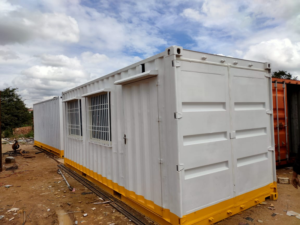
In today’s rapidly urbanizing world, water pollution is becoming an ever-increasing concern in the quest for clean, safe water. One way to mitigate this issue is through the use of effective stormwater management systems. A key component of these systems is drain grating, which plays an indispensable role in preventing water pollution by filtering out debris and contaminants from stormwater runoff. Among the wide variety of drain grates available, fiberglass drain grates have emerged as an effective and cost-efficient solution for safeguarding our water resources. In this article, we’ll take a closer look at the important role that fiberglass drain grates can play in water pollution prevention.
The Advantages of Fiberglass Drain Grates
Fiberglass drain grates offer numerous advantages over traditional grates made from materials such as concrete, steel, and cast iron. Due to their lightweight, high-strength, and corrosion-resistant properties, fiberglass drain grates are easier to install and maintain, significantly reducing the overall cost of a stormwater management system. Moreover, their non-conductive nature eliminates the risk of electric current transfer, making them a safer choice for both public and private installations.
The well-designed and strategically placed fiberglass drain grates effectively capture pollutants such as trash, oil, sediment, and chemicals that would otherwise end up in stormwater runoff. These pollutants can harm aquatic life, contaminate drinking water sources, and contribute to the eutrophication of water bodies, ultimately leading to algae blooms, fish kills, and loss of biodiversity. By capturing and filtering out these pollutants, fiberglass grates play a pivotal role in preserving water quality and promoting environmental sustainability.
Best Practices for Installing and Maintaining Fiberglass Drain Grates
To ensure the optimal functioning of fiberglass grates in preventing water pollution, it is important to adhere to the following best practices:
Proper Sizing and Placement
It is crucial to choose the right size and type of grate for your specific application. For instance, larger grates with smaller openings may be required in areas where heavy debris or rapidly flowing stormwater is expected. Furthermore, grates should be installed at critical points in the drainage system, such as inlets and outlets, to maximize their pollutant-trapping effectiveness.
Regular Cleaning and Maintenance
Like any other component of a stormwater management system, fiberglass drain grates require regular cleaning and maintenance to ensure they remain effective in capturing pollutants. Debris buildup can hinder water flow and reduce the grate’s ability to filter out contaminants, making routine cleaning essential for maintaining their performance.
Inspect and Replace Damaged Grates
Damaged or compromised fiberglass grates can negatively impact their effectiveness in preventing water pollution. Periodically inspecting the grates for signs of damage, wear, or corrosion, and replacing them when necessary, is critical to ensuring the continued effectiveness of your stormwater management system.
To Conclude
The use of fiberglass drain grates in stormwater management systems is an effective way to mitigate water pollution. By knowing about drain grating and adhering to best practices for installing, maintaining, and inspecting grates, you can ensure the optimal performance of your stormwater management system in preserving water quality.



